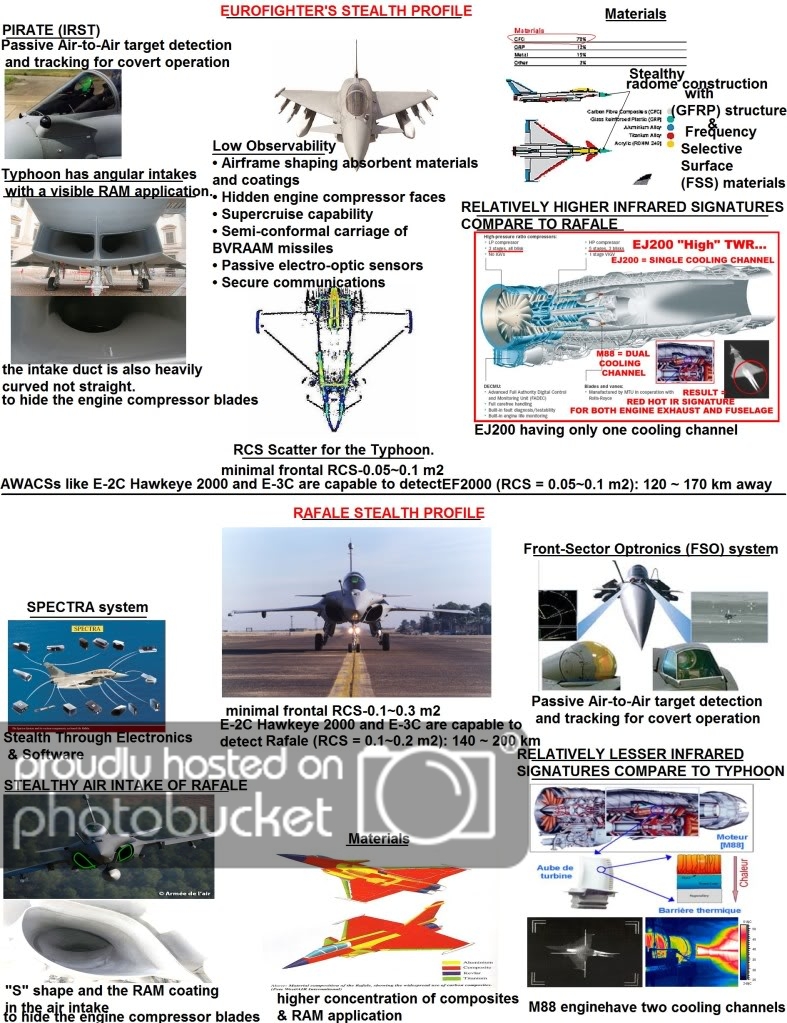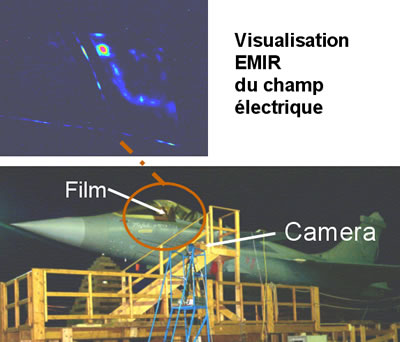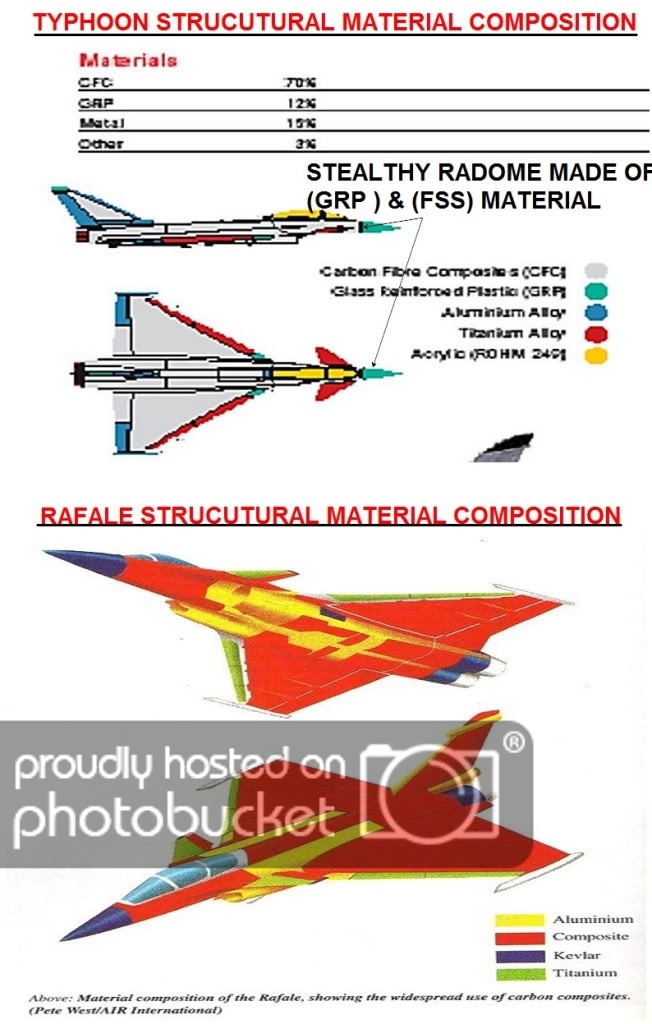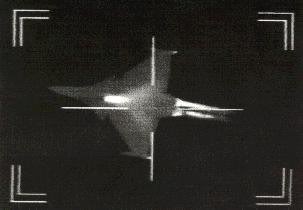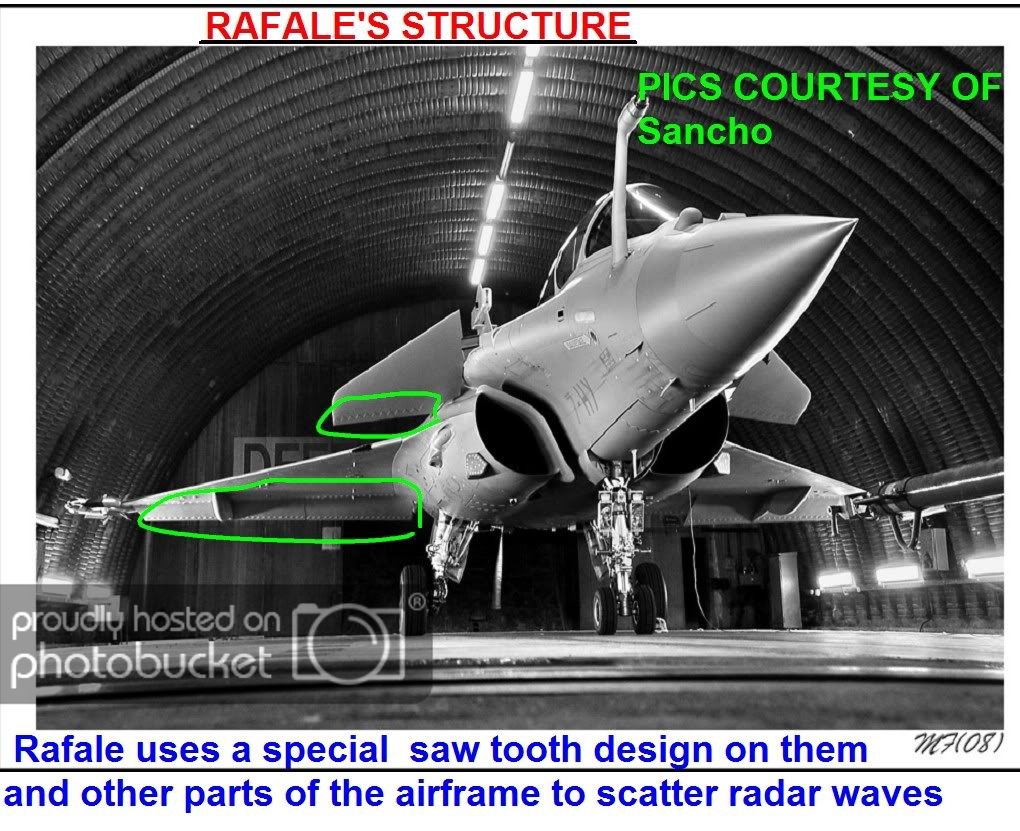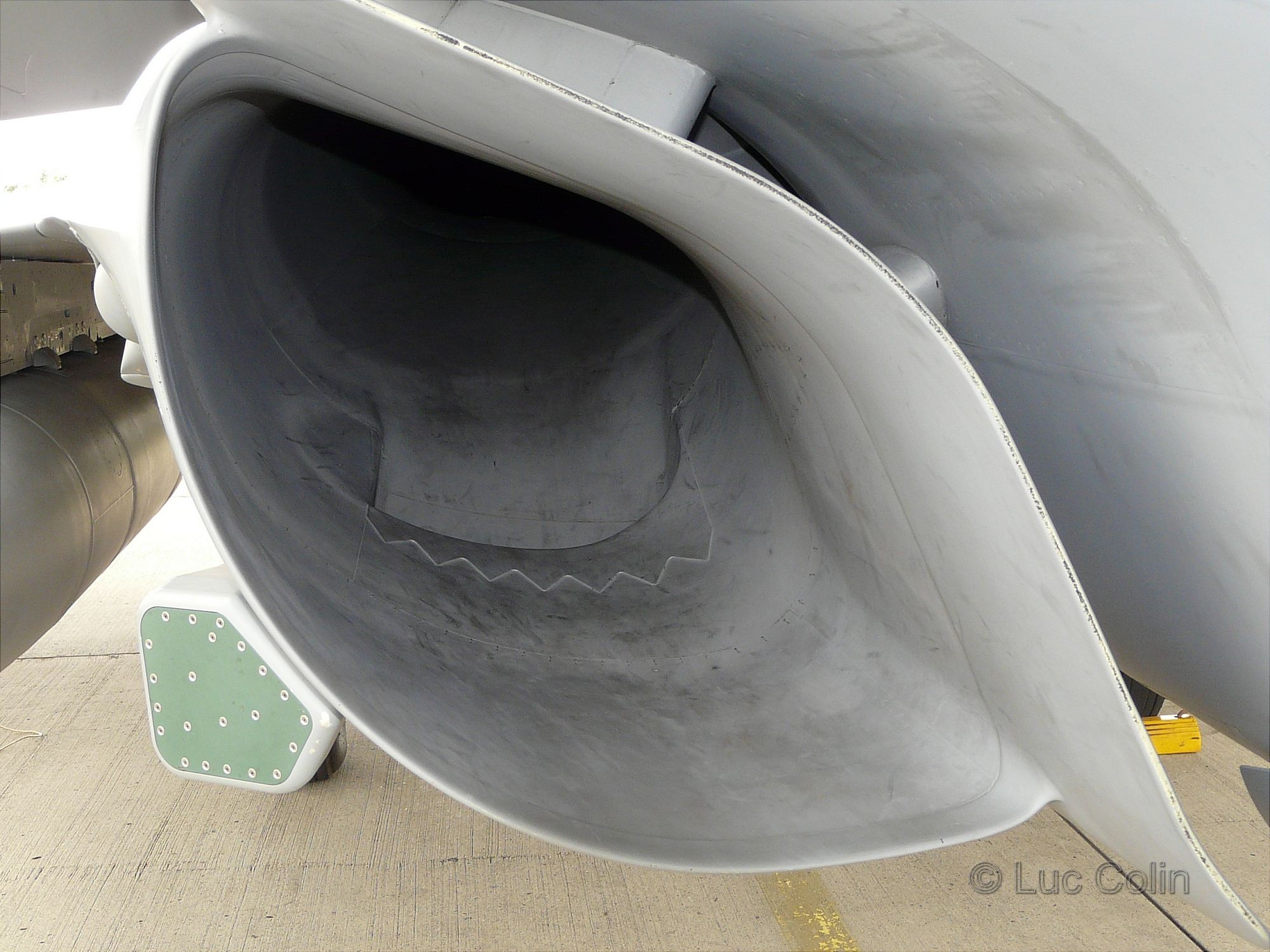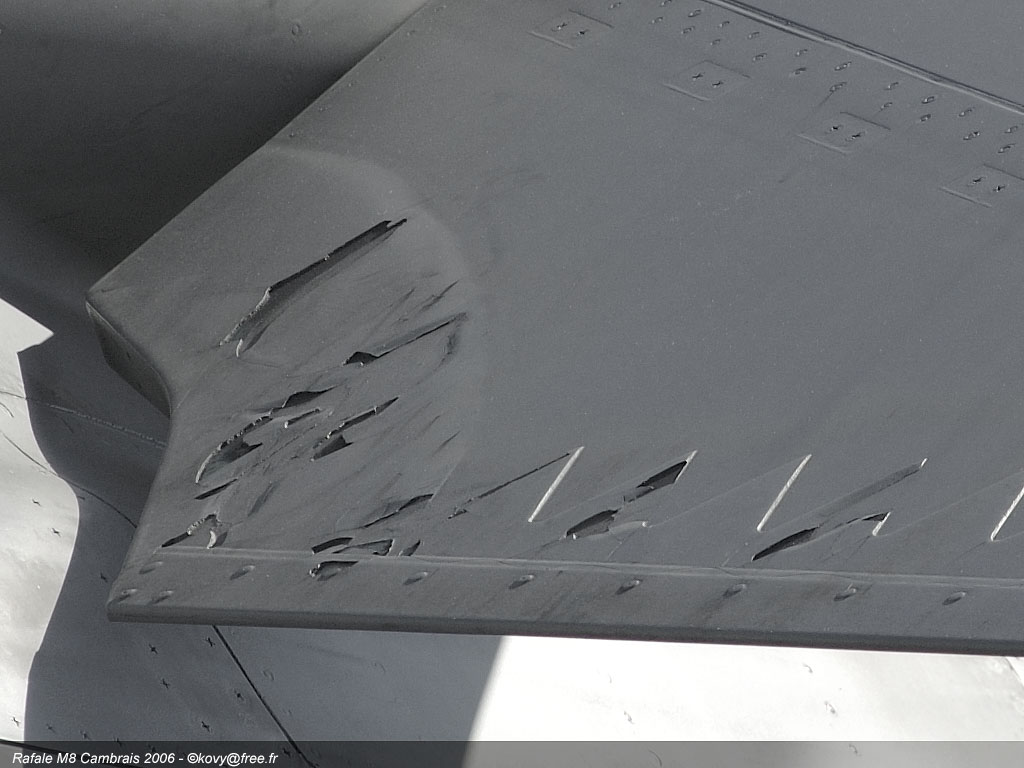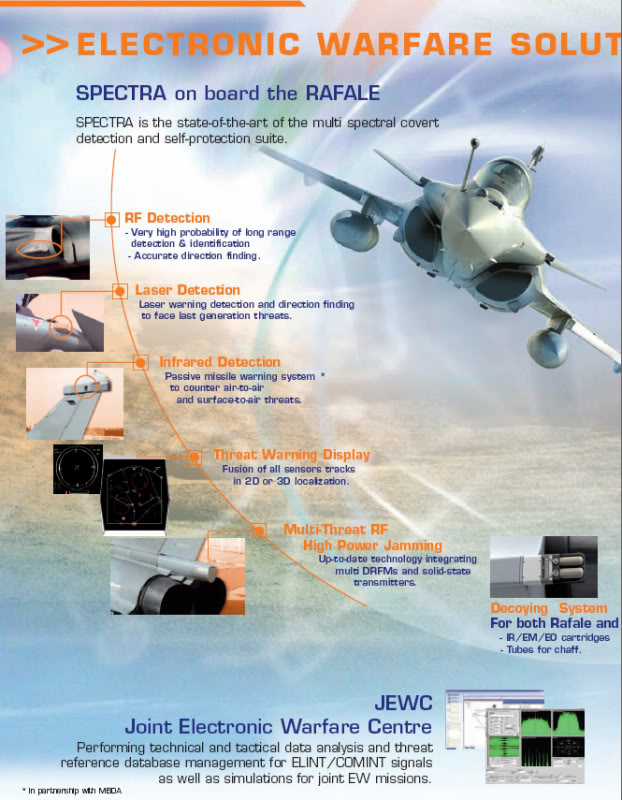كثُر الكلام هذة الايام عن الرفال خاصة مع اقتناء مصر لهذة المقاتلة حيث تباينت الاقاويل ما بين اذا ماكانت ناجحة ام فاشلة وتمت مقارنتها بالكثير من الطائرات من بينها الاف 22 والاف 35 واليوروفايتر تايفون وغيرها من الطائرات المفاتلة .
ولكن يجب توضيح ان المقارنات النظرية مختلفة تماما عن التجربة العملية لذلك عندما تُبدى دولة ما اهتمامها بمقاتلة ما، تقوم بدراسة الامكانيات النظرية لهذة المقاتلة ومن ثم ترسل افضل طياريها للتجربة واذا ما كانت منافسة للفوز بعقد شراء تقوم بالمفاضلة بين المقاتلات فى التجارب الواقعية ( مواصفات فنية - أداء - تسليح ) وليس على الورق ولكن يتم اخذ المسائل النظرية في الاعتبار وتدخل ايضا بنود اخرى كتكاليف التشغيل والصيانة وتوفير الدعم اللوجيستي للطائرة وايضا الدوافع السياسية ( وهى الاهم فإذا ما قمت بشراء طائرات امريكية ستمتلك تأييد دبلوماسى وسياسي لا باس بة من امريكا ونفس الوضع ايضا للاتحاد الاوروبي والناتو بصفة عامة ) وايضا تتدخل العمولات المدفوعة لقيادات فى اسلحة الجو وكذلك تنوع التسليح وغيرها من العوامل الهامة .
* مثال | صفقه قياسية وصغيرة مُتمثّلة في عقد شراء مقاتلات بعدد لا يتجاوز 3 اسراب لسلاح الجو البولندي :
- كانت المسابقة تتركز على 3 انواع ( ميراج 2000-5 ~ واف 16 بلوك-52 ~ ساب جريبين )، وتمت مراجعة المعلومات التقنية للـ3 مقاتلات وبدأت التجربة العملية لهم من قبل الطيارين البولنديين فى مهام : الاعتراض الجوي ~ جو-ارض ~ الاستطلاع ~ السيطرة الجوية ~ اخماد الدفاعات الجوية ~ الحرب الاليكترونية ، بالاضافة لحساب تكلفة التشغيل والصيانة لكل مقاتلة .
- مهام الاعتراض الجوي : الاف 16 وبعدها الميراج 2000 ثم الجريبين
- مهام السيطرة الجوية : الميراج وبعدها الاف 16 ثم الجريبن
- مهام الجو-ارض : الاف 16 وبعدها الميراج ثم بعدها الجريبين
- مهام الاستطلاع : تساوت الميراج 2000 والاف 16 وبعدهم الجريبين
- مهام اخماد الدفاع الجوي : الجريبين وبعدها الاف 16 ثم الميراج 2000
- مهام الحرب الاليكترونية : الميراج 2000 وبعدها الاف 16 ثم الجريبين
- مصاريف التشغيل : الجريبين هي الأفضل بفارق عن الميراج 2000 ومن بعدهم الاف 16
ولكن فى النهاية تم ابرام العقد لصالح الاف 16 باعتراف البولنديين لاسباب اكتساب دعم سياسى ودبلوماسى من امريكا، وبالتالي الاعتبارات السياسية هي التي حسمت الامر .
اذا فإنة من السذاجة الشديدة ان يتم الحكم على طائرة بمقارنة كتابية وتقنية فقط على الورق، ومن يستخدم هذة الطريقة ليس واقعيا بالمرة ويفتقر للإدراك الفعلي للامور، ومن الممكن ايضا ان يُقلل من الطائرة بدافع سياسي او لاعتراضه على وضع ما او بسبب انتماء سياسي او ايديولوجي ولكن هذا ليس حكما عادلا، بل انه من الافضل ان نبتعد عن العاطفة والمشاعر للحكم بطريقة صحيحة .
* وبالتطبيق على صفقة الرفال المصرية سنجد انه من البديهى ان تكون الرفال هى الاختيار الامثل بسبب الاتي :
1- حليف سياسي قوي وله ثقل كبير ويدعم موقفنا على المستوى العالمي .
2- حليف يقدم تسهيلات ونوعيات تسليح محظور الحصول عليها او امتلاكها من الامريكان .
3- خدمات ما بعد البيع من صيانه ودعم لوجستي .
4- سلاح يقدم خليط ما بين الواقعية وقوة الاداء وتكنولوجي تتفوق على ما يقابلها من الغربي او الشرقي .
5- مصر اختبرت الطائرات الفرنسية ولها خبرة طويلة فى التعامل معها منذ السبعينيات وباستخدامنا لها ابهرنا كل الدول فى التدريبات المشتركة ومن ابرزها النجم الساطع عندما استطاع تشكيل مصري مكون من 4 مقاتلات ميراج 5 غير مطورة بالمرة من الاغلاق على 6 مقاتلات اف 18 هورنيت مُطورة من الاسطول الامريكي .
6- الرفال مقاتلة ممتازة جدا في اخضاع اى هدف ارضي او بحري مع امكانية الاشتباك الجوي باستخدام التكنولوجيا المتطورة وتكتيكات جديدة تجعلها قادرة على التصدي للمقاتلات الحديثة جدا حتى من الجيل الخامس نفسه .
وهذا ماستضيفة لمصر، حيث ستفتح بابا جديدا من التكتيكات والادراك لتكنولوجيات معاصرة ومعرفتها بشكل مُفصّل والخروج بحلول جديدة للتعامل معها بكل سهولة .
الحروب الجوية المعاصرة :
ــــــــــــــــــــــــــــــــــــ
منذ ان ظهرت صواريخ جو-جو المُطلقة من المقاتلات بعد ان كان المدافع الرشاشة هى الحل الاول للاشتباك الجوي، اصبحت الامور اكثر سهولة مُتمثلة في قدرة اكتشاف العدو من مسافات بعيدة باستخدام الرادار والاطلاق عليه من خلف مدى الرؤية BVR Beyond Visual Range، ولكن بعد تعميم الرادارات فى الطائرات المقاتلة واصبح كلا من المهاجم والمدافع بإمكانهما رؤية بعضهما البعض والاطلاق على بعضهما البعض، ظهرت مستشعرات تحذيرية بالإغلاق لكي تنبة الطيار انة تم الاغلاق عليه من رادار العدو وان الصواريخ مُتجهة نحوه، فظهرت تقنية جديدة وهي التشويش الإلكترونى على الرادارات والاتصالات لتقليل الوقت اللازم للدفاع عن النفس او الهرب او تحريم الخصم من استخدام تقنياته من الردارات والصواريخ الموجهو رداريا، فظهرت تصميمات مقاتلات للجيل الخامس والتي تعتمد على تقليل البصمة الرادارية للمقاتلة لتمنحا قدرة الإقفال المفاجىء والقتل المفاجىء للخصم .
وبعد ان تم دراسة هذة التصميمات وُجد فعلا انه من الصعب اكتشافها بالرادارات من مسافات بعيدة، ولكن وقعت فى فخ الحرارة المنبعثة منها، ومن ثم فقد ظهرت انظمة البحث الحرارى وتم تركيبها على المقاتلات وايضا الانظمة الكهروبصرية / التليفيزيونية، وبالتالي اصبحت الحل الامثل للرد على المقاتلات الشبحية، وفي المستقبل ستصبح القاعدة العامة للمقاتلات هي : " الرادار لمهام الجو-ارض والانظمة الحرارية والتليفزيونية لمهام الجو-جو ".
والسبب في ذلك ان المقاتلات بمجرد استخدامها للرادارات في البحث، ستقوم المقاتلات المعادية بالتقاط الانبعاثات الرادارية لها على الفور وستحدد مواقعها وتهجم عليها، وبالتالي اصبح الامر معقدا جدا حيث اصبح من الافضل للمقاتلات التسلل واطلاق الصواريخ من مناطق آمنة والبقاء غير مرصودة، والإطلاق يتم بقدر الإمكان فى مناطق اللا هروب NEZ no Escape Zone ( وهى دائرة وهمية يستطيع الصاروخ ان يتحرك داخلها بحرية كبيرة مهما قامت المقاتلة بالمناورة فيستطيع ضربها وتعرف ايضا بمنطقة القتل Kill Zone ) .
الطائرات التى تحمل هذة الانظمة : التايفون الاوروبية ( ليس كل النسخ ) - الرفال - الاف 35 - الميج 29 بجميع النسخ - السوخوى 27/30/35 بجميع النسخ .
* ولناخذ مثالا على مقاتلات الجيل الخامس وهي الاف 22، ولكن يجب اولا ان نفهم طريقة اشتباك هذه النوعية من المقاتلات وهذا ما تم الكشف عنه من قبل سلاح الجو الامريكى عن طريقة الاشتباك وتعليم طيارين الرابتور كنوع من البروباجندا الاعلامية :
- يتم تدريب طيار الرابتور فى الحالة الهجومية كالاتي : فى البداية يقوم الطيار بظبط وضعه بحيث يكون فى وضع المواجهة وجها لوجه Head-on Aspect والذي يتم من خلاله الاستفادة من كل خط فى تصميم الرابتور، وبعدها يبدأ في التعامل بالصواريخ الرادارية، ولكن هناك مشكلة بالنسبة للرابتور عند استخدام الصواريخ الرادارية، وهي ليس فقط ان الرادار يمكن التشويش عليه او ان خصمها يمكن ان يستغل نقطة ضعف فيه وبالتالي لابد ان تفتح الرادار فى المكان والوقت المناسبين بعد ان يكون الطيار قد كون صورة واضحة ومدرك تماما لكل مايحدث من حوله .
تبدأ الرابتور في استخدام صواريخها بعد ظبطها لوضعها بحيث تكون غير مكشوفة للخصم، ويتم الهجوم بإقفال من رادارها على مقاتلة الخصم وتطلق صاروخها ثم تُغلق رادارها على الفور، في حين ان الصاروخ يأخذ
طريقه نحو الهدف الى ان يصل للمدى الذي يُنشّط فيه راداره الخاص ليقوم بالاقفال على مقاتلة الخصم ويضربها مباشرة او ينفجر بواسطة الفيوز التقاربي متسببا في دائرة انفجار لا تزيد عن 10 متر .
- اما في الحالة الدفاعية فيتم الاتي : دفاع الرابتور مبنى على عد كشفها من الاساس، حيث ان هذا مفتاح نجاتها في القتال الجوي، خاصة وان تصميمها وكل المواد المصنوعة منها مُخصصة لهذا الغرض، ولذلك اسلوبها مختلف عن باقي المقاتلات وليها طبيعة خاصة .
- اكبر عامل في كشف الرابتور هو استخدامها للراديو او الردار، حيث ام انبعاثات الطاقة الخاصة به ستكشفها من مسافة بعيدة جدا، والتالي افضل حل يبقيها متخفية هو انها لا تستخدم الرادار او تقلل من استخدامه او تقوم بتخفيض مداه لتقليل الطاقة المنبعثة .
- طيار الرابتور يتم تدريبه على تكتيك اسمه EMCON Emissions Control او السيطرة على الانبعاثات، واول مايتعلمه هو ان يبقي رادار المقاتلة مُغلقا ولا يقوم بتشغيله الا فى الحالات الحرجة، وهذا الاسلوب يضمن انها لن تتعامل مع حالات حرجة الا قليلا .
- الأمر الثاني الذي يتعلمه طيار الرابتو فى EMCON هو ان يقوم بفتح شاشة المنظومة الدفاعية الخاصة به ويبدأ في مراقبة مايحدث عند فتحه للرادار واغلاقه له ويشاهد فاعلية رادرات مقاتلات الخصم عندما بتفتح راداره والتي من المفروض ان تزيد عليه للضعف اصلا .
- بعد ذلك وبمجرد ان يُطلق صاروخ معادي على الرابتور، تثوم المنظومة الدفاعية بالتحذير وتختار وسيلة الدفاع المناسبة وتلقيها أوتوماتيكيا في الوقت والمسافة المناسبة والمُقدّرة تقريبا بـ1.6 - 4.8 كم . وتحمل الرابتور 100 رقاقة معدنية مضللة للرادار Chaffs ، وللعلم فأنه بمجرد الفائها سينكشف مكان الرابتور وتنتهي شبحيتها، وبالتالي يتم تدريب الطيار بقدر الامكان انه اذا أُطلق عليه صاروخ يقوم بالالتفاف ويواجه مسار الصاروخ ويضرب خصمه الذي اطلق عليه بصاروخ مماثل .
- تحمل الرابتور 100 شعلة مضللة للصواريخ الحرارية Flares وهي من نوعية قوية جدا وليس معنى انها القتهم فإنها اصبحت في امان، ولكن يعتمد الامر على المسافة التي القت فيها الشعلات والزاوية مع رأس الصاروخ وقدرة الشعلات على خداع رأس الصاروخ، وبالتالي لابد من الرابتور ان تقوم بالمناورة اثناء إلقائها .
يتعلم طيار الرابتور ايضا المناورة بمقاتلته ضد صواريخ الدفاع الجوي والصواريخ جو-جو ، حيث يتعلم ان يرى الصاروخ وهو قادم ،وفي حال انه صاروخ حراري يبدأ بالبحث عنه بنظره وان لم يستطع رؤيته يقوم بإلقاء النظر على شاشة المنظومة الدفاعية وبمجرد التقاطه يبدأ في تنفيذمناورة 3 / 9 بمعنى انه يجعل الصاروخ الصاروخ جناح المقاتلة ( على جانب المقاتلة يمينا او يسارا ) وليس على ذيل المقاتلة او مقدمتها ويستمر في تثبيت الصاروخ على هذا الوضع مع مناوراته ووضع طيرانه ، وبالتالي فإنه يجبره على استنزاف طاقة كبيرة طاقة كبيرة ليستطيع الاصطدام بالمقاتلة ، وفي كل مرة يجبره فيها على الالتفاف مع المقاتلة فأنه يُعجّل من نفاذ طاقة الصاروخ وسرعتة ستبطأ ايضا ، ومع الوقت فأنه يقوم بالدخول الى دائرة التفاف الصاروخ ويطرده حارج دائرة الدوران الخاصة بالمقاتلة ويهرب منه .
- ناتى للمواجهة المباشرة بين الطائرات لبيان كيفية تعامل كلا النوعين ضد بعضهم البعض : سنأخذ الرفال والتايفون كمثال للطائرات التى تستعمل منظومات الرصد الحرارية ضد الاف 22 وما سيتم سردة الان هو حدث بالفعل فى تدريبي الظفرة فى الأملرات وايضا فى ألاسكا فى تدريبات العلم الاحمر الامريكي .
باختصار المقاتلة اف 22 رابتور بما انها لا تملك منظومة رصد كهروبصري كالـOSF وربما تصميمها الشبحي يساعدها بشكل كبير على العمل وسط اجواء معادية ولكن المشكلة انها بمجرد تشغيل منظومة IFF لتعريف العدو والصديق سيتم كشفها في الحال نظرا للانبعاثات الصادرة منها ويصبح الحل الوحيد لها وجود طائرة أواكس AWACS تطير خلفها بشكل دائم لتكشف لها العدو والصديق او ان تقوم بمرافقة مجموعة من الطائرات التي تستخدمها كطعم لعمل كمين جوى وتتواصل مع الطعم لتحديد اماكن العدو بدقة لتهجم علية فى وقت لاحق بدون ان تقوم بفتح ردارتها لكي لا يتم كشفها .
تكتيكات الاف 22 تعتمد دائما على التحرّك في تشكيل رباعي او ثنائي ودائما ماتضع نفسها فى وضع المواجهة وجها لوجه Head-on على ارتفاع عالي جدا من الهدف للوصول لأفضل وضعية تضمن لها عدم التعرض للكشف وتبدأ في اطلاق صواريخها من مسافات امنة ثم تهرب سريعا باستخدام محركاتها ذات قوة الدفع الهائلة ... وأيضا الانبعاث الحراري الضخم ، وطبعا لو حاولت الاقتراب بشكل أعمى في ظل وجود تشويش الكتروني ستجد نفسها وسط قتال متلاحم Dogfight صافي . ولكي تضمن اصابة محققة من اول ضربة لابد لها من اطلاق الامرام في نطاق منطقة القتل أو اللا افلات No Escape Zone / Kill Zone ( تُقدر بـ30 - 40 كم بحد اقصى ) وهذا يمثل خطورة شديدة عليها لأنها ستتعرض للكشف والدخول في قتال متلاحم .
- اذا كيف للرافال التعامل مع هذه المقاتلة ؟
باختصار تكون الرفال فى الحالة الخاملة بدون استعمال الردار وفى صمت للاتصالات وتقوم بالبحث بالنظم الحرارية والبصرية العادى وحسب المتعارف عليه فمن المفترض ان منظومة OSF على الرفال يمكنها رصد الاف 22 من مسافة 40 - 50 كم من مقدمتها واكثر من 90 كم من مؤخرتها، ومعروف ان المقاتلات الشبحية بتصميمها أن هيكلها يقوم بتخزين كمية كبيرة من الحرارة، ولذلك عندما تكون الرابتور على اتفاع 11 كم ستصل درجة حرارة هيكلها الى اكثر من 50 درجة وستزيد كلما زادت سرعتها نظرا لاحتكاكها الشديد بالهواء مما سيجعلها كالنيزك لدى النظام الحراري للرفال اصلا وهذا هو المعتاد على كل المقاتلات ذات التصميم المشابه .

واذا ماقامت الرابتور بواسطة وصلة البيانات مع طائرات الأواكس او مقاتلات اخرى بتحديد مكان الرفال وفى لحظه فتح رادارها للاغلاق عليها ستلتقطها الانظمة الدفاعية للرفال لتحدد مكانها وتبدأ بالاجراءات المضادة ضد الاغلاق الراداري او ضد الصواريخ نفسها ، وباعتراف من الامريكان فإن هذة النظم قادرة على الهروب من صواريخ الامرام وتقوم بإدارة نيرانها على الاف 22 وادخالها لمدى الصواريخ الحرارية والردارية الخاصة بها ، وخاصة لو فرضنا ان الرابتور سقطت فى مدى قصير مع الرافال بسبب الدفع الموجّه للمحرك مع الحجم الضخم متسببين في استهلاك الوقود بشراهة كبيرة مما يجعلها فريسة لها ... هذا في حالة انه لديه الوقود الكافي اصلا ...
فعلى هذا الارتفاع الشاهق وبحكم التصميم فإن الرفال لها اليد العليا في معدل الالتفاف الفوري Instantaneous Turn Rate مع الوزن الاخف للجناح عن الرابتور وتستطيع تنفذ مناورة الـRoll ( التفاف المقاتلة حول نفسها ) لنفس حجم الجناح ايضا ، في حين ان الزاوية الضيقة لدى الرابتور افضل بسبب تقنية الدفع الموجه Thrust Vectoring مما يُقلل معدّل الحمل اللازم للزاوية بعكس الرفال التي يمكن أن تتخذ الزاوية الضيقة بمعدل حمل اكبر او على السرعات القليلة باستخدام الجنيحات الأمامية ( الكانارد Canard )، وعندما نتحدّث عن زاوية الرؤية خلف الطيّار فسنجدها سيّئة للرابتور بحكم تصميم القبة الزجاجية لكابينة القيادة بعكس الرافال الأفضل مما يسهل من امكانية ركوب ذيل الرابتور بسهولة من قبل اي مقاتلة معادية دون ان ينتبه الطيار لذلك .
اذا تحدثنا عن قدرات الرصد الراداري فإن الرابتور رادارها بالتأكيد يصل الى مدى 400 كم بحد اقصى ولكن على استهلاك اقصى للطاقة Peak Power يصل الى 20 كيلو وات في حين ان رادار الرافال يعمل بكامل مداه الاقصى 230 كم ولكن على استهلاك اقصى للطاقة يصل الى 14.6 كيلو وات .
اذا في حالة استخدام الرابتور لرادارها بأقصى طاقة له فإنها تعرض نفسها للكشف بسبب انبعاثات الطاقة التي ستلتقطها على فور منظومة SPECTRA السلبية على الرافال .
على الجانب الاخر لو استخدمت الرابتور منظومة الحرب الالكترونية السلبية الخاصة بها AN/ALR-94 لالتقاط انبعاثات رادار الرافال فبكل تأكيد عليها ان تقترب اكثر مما تحتاجه الرافال لعمل المثل لأنه كما ذكرنا ان انبعاثات الطاقة لرادار الرافال اقل مما لدى الرابتور بالتالي ليتم كشفها لابد من الاقتراب لمسافة اكبر، حسنا لقد رصدت الرافال فما الخطوة التالي ؟
ستقوم بتفعيل رادارها وتشغيله مرة اخرى بكل تأكيد للامساك بها Lock on لاطلاق صواريخ الامرام من اقصى مدى لها وهنا ستلتقطها منظومة الـSPECTRA وتبدأ في التشويش المعتاد ضدها ( رادار الرابتور يُعد الاحدث والاقوى عالميا ويصعب بشدة التشويش عليه ولكن على الاقل يُمكن تحجيمه نوعا ما ) والتشويش ضد الصاروخ نفسه مع القيام بمناورات الافلات والتي ستكون كافية للابتعاد عن الصاروخ وتضليله خاصة وانه مُطلق من مداه الاقصى الذي يتجاوز 100+ كم وسيظل الأمر كما لو أنه دوران في دائرة مغلقة لا نهاية لها وستصبح الرابتور مُجبرة على الاقتراب لمسافة اقل من 50 كم لتضمن اطلاق الامرام بنسبة اصابة عالية وبكل تاكيد ستكون مضيئة لدى منظومة OSF البصرية وستتلقى صاروخ ميكا حراري بمداه البالغ 60 كم ( نفس مدى منطقة القتل الخاصة به ) ويتبعه اخرالراداري ذات المدى البالغ 80 كم مع منطقة قتل 60 كم اي ضعف منطقة قتل الامرام وبتقنية الدفع الموجّه التي تمنحه قدرة مناورة اضافية مما يجعل فرص افلات الرابتور صفر او اقل قليلا ..
وقد رأينا ان الرفال استطاعت الاغلاق على الاف 22 فى الفيلم المصور من داخل كابينة قيادتها بعدد 3 مرات اغلاق مؤكدة :
* لا تتعجبوا من تأوهات الطيار فذلك بسبب معامل الجهد العالي نتيحة المناورة ضد الجاذبية الارضية والضغط الجوي
وقامت التايفون بنفس الشىء ايضا وبعبارة بسيطة جدا من الطيار الالماني الذي قال : " لقد أعددنا طبق سلاطة من الاف 22 " وتظهر علامات القتل على جانب طائرتة :
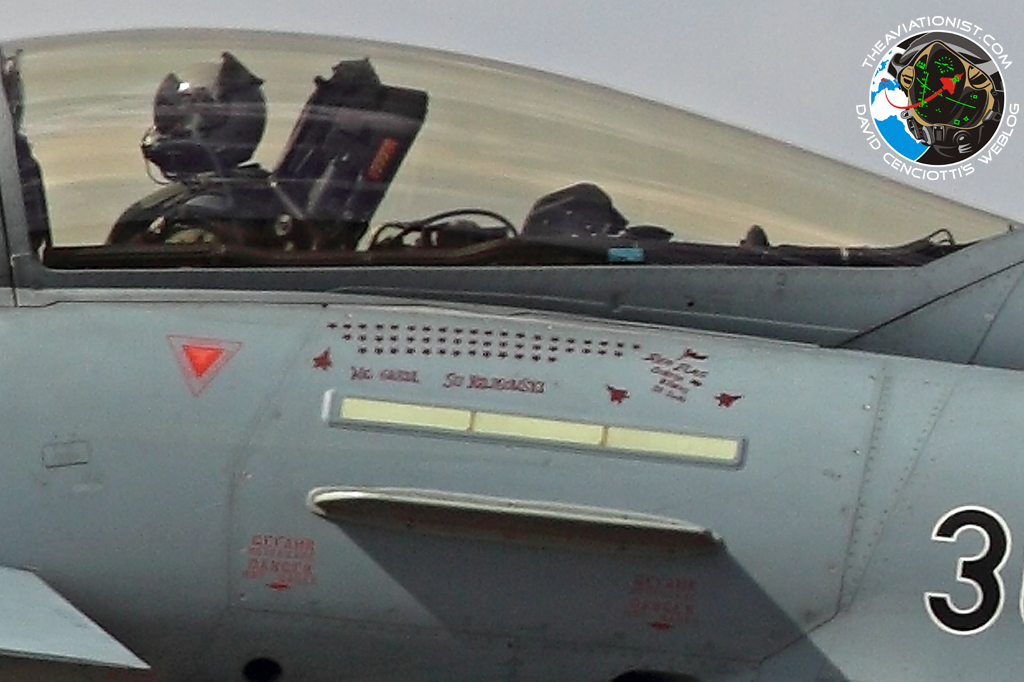
* ناتي للإف 35 | لاشك أنها مقاتلة تتمتع نظريا على الورق بردار قوي مشتق في الاساس من رادار الاف 22 وتكنولوجيا متقدمة جدا للتبع والرصد ، ولكن لانستطيع اهمال النقاط التالية :
معدل الدفع للوزن Thrust / Weight حوالي 0.87 وهذا معدل يشير الى قدرة على المناورة اقل من الاف 22 رابتور ، ولكنه يزيد كلما تم تقليل الحمولة ليرتفع الى 1.07 وهذا بما يقارب نسبيا الاف 16 بلوك 15 .
الحجم الكبير للمقاتلة ومساحة الاجنحة البالغة 42.7 متر2 .
محرك يوفر قو دفع هائلة تصل الى 191.35 كيلو نيوتن ( 43 ألف رطل ) وهذا معدل بالغ القوة ( يتجاوز قوة الدفع لمحركي الميج 35 معاً ) لكن في نفس الوقت المقاتلة ثقيلة ومع محرك بالغ القوة بهذا الشكل وكأنها مقاتلة ثنائية المحرك مما ينتج عنه بصمة حرارية هائلة بالاضافة الى بصمة صوتية مرتفعة جدا ، اعلى من الاف 16 نفسها ، بخلاف السرعة القصوى القليلة نسبيا والمقدرة بـ1.6 ماخ ( 1900 كم / ساعة ) .
- حسنا ماذا عن التصميم الشبحى ؟
باعتراف الخبراء الامريكان ان الاف 35 ليست بقوة شبحية الاف 22 ومن المؤكد ايضا انه يتم اكتشافها بواسطة الانظمة الحرارية والبصرية ولكن من مسافة ابعد من الرابتور بسبب انها تمتلك اكبر محرك باحث للطاقة على الاطلاق في فئة المقاتلات على مستوى العالم ، وبجانب ذلك لاتحتوي على عوازل لتقليل الحرارة والتي تم ازالتها فى محاولة لتقليل الوزن الثقيل الذى يؤدي بدوره الى استهلاك كمية كبيرة من الوقود في الاشتباكات وايضا تمتلك نسبة Supercruise سيئة ( اقصى سرعة تصل لها الطائرة بدون ستخدام الحارق اللاحق Afterburner ) فالرفال تستطيع ان تقوم بالـSupercruise بدون الحارق اللاحق على سرعة 1.3-1.4 ماخ حسب الحمولة ولكن فى المقابل الاف 35 ما تستطيع الوصول الية هو 0.89 ماخ اي ان طيار الاف 35 اذا ما اراداالهروب من منطقة الاشتباك او من صواريخ معادية او من منظومات ارضية فسوف يستخدم الحارق اللاحق للوصول لسرعات فوق الصوتية وهو ما يجعلة كالشمس المضيئة او النيازك امام كل أنظمة الرصد الحرارية .
ونجد ايضا النظام الكهروبصرى للاف 35 والمعروف بإسم EOTS والغرض منه هو ان يكون ضد الاهداف الارضية بحكم موضعه اسفل انف المقاتلة فهو ليس مخصص للجو جو على عكس نظام الرفال .
وبالنظر ايضا فكل من الطائرتين تستخدم منظومة حماية محيطة بها فى دائرة 360 درجة ، حيث تستعمل الرفال نظام عين السمكة وفى المقابل تستخدم الاف 35 6 كاميرات من الاسفل والخلف وبسبب وضعهم فى زوايا ضيقة فإنها تجعل الاف 35 مكشوفة تماما وغير خفية من رادارات الدفاع الجوي العاملة على النطاق X-Band من الاسفل ومن الخلف .
واذا ما تم كشفها بواسطة الرفال وتم الدخول فى معركة جوية طاحنة وبالنظر الى النسخة A من الاف 35 باعتبارها النسخة الاكثر مناورة وسط باقي النسخ الاخرى فهى تمتلك نسبة حمل على الاجنحة Wing Loading كافية للحد من مناورتها وتجعلها تفقد الوقود بكميات هائلة .
وقد تم تسريب تقرير حديث لمعركة تدريبية بين الاف 35 والاف 16 فى حوار صحفي مع طيار اف 16 بلوك 40 اختباري ( طيار متخصص في اختبارات الطائرات ) كان قد واجه طائرة اف 35 فى التدريبات وقاتل ضدها 3 مرات مع تقييد مناورة الاف 16 بعدد 2 خزان للوقود لتقليل مناورتها وبدات المواجهة كالاتي :
تكون الاف 16 في وضعية الدفاع ضد الاف 35 التي تكون هي الصياد وتطارده من الخلف ، ومرة اخرى يكون هو الصياد ومطاردا لها ومرة اخرى يكون في نفس المستوى ، وقال ان مناورة الاف 16 ضد الاف 35 كانت مثل مناورتها ضد الاف 18 هورنيت ، فمن المعروف ان الهورنيت انها اقل بكثير من الاف 16 في معدل الالتفاف المتواصل Sustained Rate ونتيجة لذلك فإنها تقوم بتقليل سرعتها وتستفيد من ميزة الهجوم من زوايا عالية التي تتفوق فيها على الاف 16 .
فيقول الطيار ان الاف 35 مثل الاف 18 هورنيت ولكن اقل منها لأنها تنزف السرعة والطاقة بشكل اسرع وهذا يتيح للاف 16 الفرصة للدخول السريع خلفها على الرغم من المحرك القوي جدا جدا للاف 35 ولكن نسبة السحب والمقاومة Drag كبيرة جدا مما من سرعتها وطاقتها بهذا الشكل .
ويقول ايضا انه خلال الاشتباك ضد طيار يرتدي خوذة توجيه الصواريخ كالمستخدمة على الاف 35 فإنه يمكن خداعه عن طريق البقاء في البؤرة العمياء بالنسبة له من الخلف وبالتالي فقد نجحت في ضربه " As they say, lose sight, lose the fight " . وهذه صورة للتوضيح :
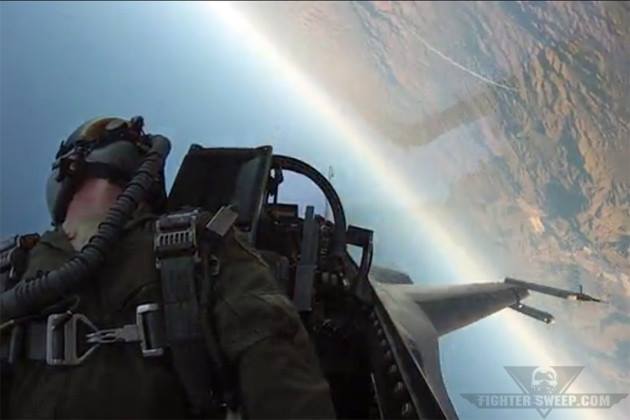
فالمهاجم من البؤرة العمياء مثل المقاتلة التي يمثّلها -على سبيل المثال- الخط الابيض للأفق والتي تنقض من الاسفل على الطائرات المعادية .
واكمل الطيار ان ان المناورة الوحيدة للاف 35 هى الهاي ألفا High Alpha الموجودة فى الصورة :
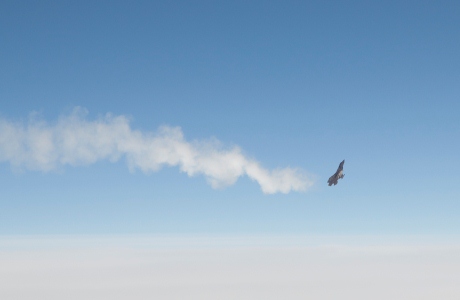
ولكنه قال ان هذة المناورة ككل مناورات سرعة الانهيار هي مجازفة لأنك تقضي على اي امل فى النجاة من صاروخ قد انطلق تجاهك لذلك لا تصلح هذة المناورة فى اشتباك متعدد ضد اكتر من طائرة بسبب العمل الجماعي تجاة الهدف المعادي .
وفى تقرير اخر من طيار فى سلاح الجو الهولندى كان قد تكلم ايضا عن خوذة التوجية وقال انة يفضّل ان ينظر بعينيه ليحدد زاوية الهدف المعادي ومسافة الاقتراب وأن الخوذة غير مريحة في ان يقوم بمثل هذه المواقف وانة لمن الافضل ان لا تجعل العدو يقترب من الاساس وان الاف 16 تتيح راحة فى الاشتباكات اكثر من الاف 35 .
وبالنظر الى الرفال فنجد انها تفوقت على جميع طائرات سلاح الجو الامريكى فى التدريبات والاشتباكات القائمة على المدى البعيد والقريب وايضا على طائرات اوروبية مثل التايفون والجريبين وبعض الطائرات الروسية كالسو 30 الهندية والميج 29 البولندية ولكن اعتمدت فى المقام الاول على تكنولوجيا الصواريخ المتقدمة ( الميكا ) وعدم اقحام نفسها فى اشتباك متلاحم مع الطائرات الروسية التى تبرع فى هذا النوع من القتال
وسنعرض بعض اللقطات للاقفال على بعض الطائرات من داخل الرافال :
ضد الاف 18 ليلا :
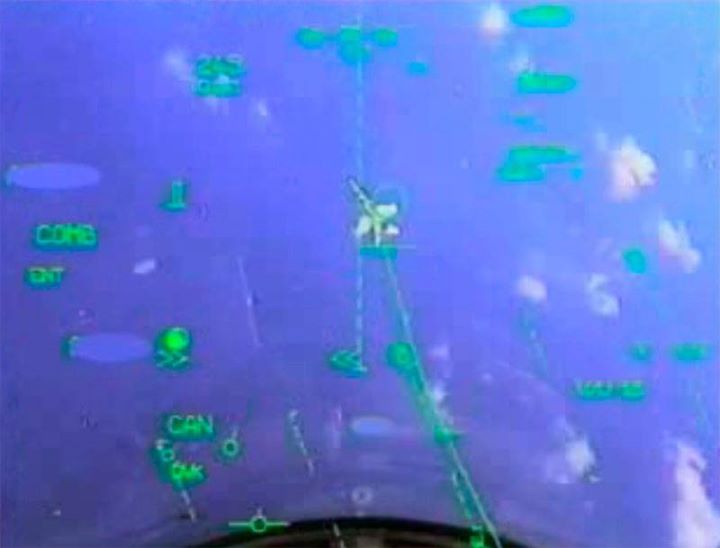
ضد الاف 16 :
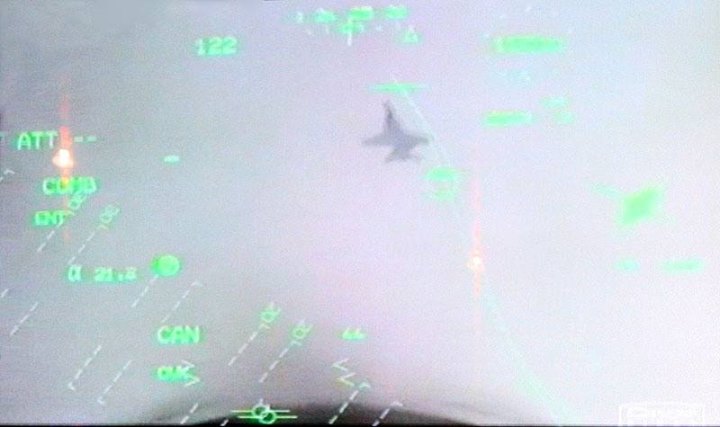
ضد التايفون :
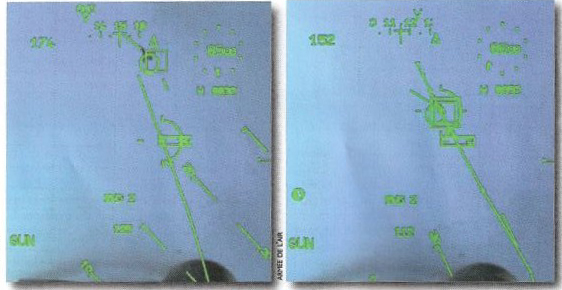
وعندما ادرك الامريكان هذة الحقيقة الموجعة بسبب عدم ادراكهم لها في البداية قاموا بدمج الانظمة البصرية / الحرارية على مقاتلاتهم للتدريب ضد مقاتلات الجيل الخامس ، وقد ظهرت سنة 2013 فى تدريبات العلم الاحمر على الاف 16 والاف 15 ، حيث استطاعت الاف 16 من الاغلاق على الاف 22 لاول مرة وفي نفس العام ايضا استطاعت الاف 18 جراولر من التشويش على رادار الاف 22 والاغلاق عليها ايضا والاطلاق من مدى 10 كم فقط لتحقيق اصابة محققة على الطائرة الشبحية الغير منيعه كما تزعم الادعاءات الامريكية .
صورة لعلامة قتل الاف 22 على الاف 18 جراولر :
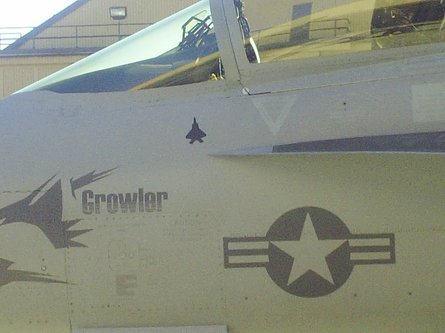
صورة لحاضن الرصد البصري / الجراري على الاف 16 :
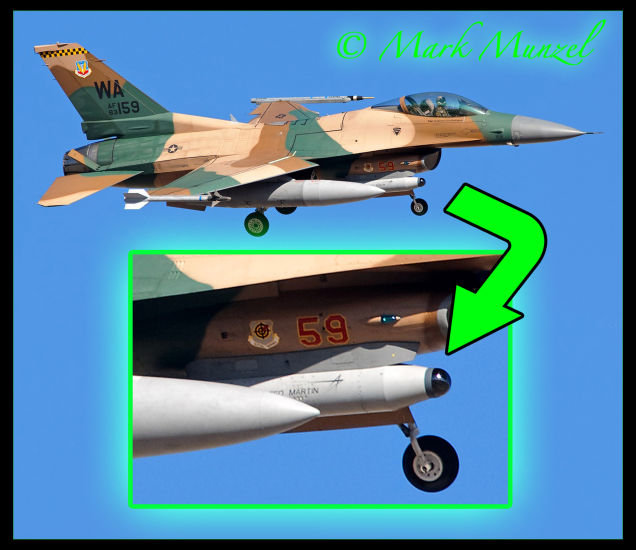
والاحدث هو حاضن الليجيون Legion الذى سيعمم قريبا على كل المقاتلات الامريكية .
وتمتلك الرفال بصمة حرارية قليلة اذا ما تم استخدم هذه الحواضن ضدها ، حيث توجد قناتي تبريد للمحركات والمصممة خصيصا لتقليل حرارتها بمعدل شديد الانخفاض في مهام الاعتراض الجوي والطيران المنخفض اثناء مهام الاختراقات للضرب الارضي :
صورة الرفال بواسطة منظومة الرصد الحراري تظهر في الصورة الرئيسية للبوست بالاسفل على اليمين .
صورة تلاف 22 بواسطة منظومة الرصد الحرارى تظهر في الصورة الرئيسية للبوست بالاعلى على اليمين .
ويظهر الفارق في البصمة الحرارية لصالح الرافال بدون ادنى جدال .
* النهاية :
ــــــــــــــــ
نختتم بمقولة طيار ميراج 2000-5 فرنسي كان قد واجه الاف 22 فى الظفره بالإمارات في قتال مفتوح بمعنى انه قتال فى سماء مفتوحة يبدأ من الاكتشاف وحتى مدى الرؤية للاشتباك القريب واستطاعت الميراج 2000-5 من اسقاط الاف 22 برغم الفارق التكنولوجي بينهما لصالح الرابتور الامريكية . وقال معلقا :
" Sometimes a battle begins even before meeting the adversary
when it is necessary to convince themselves that the opponent is not so terrible, and despite the gap of performance the technological chasm, one is able to get the game "
في بعض الاحيان تبدأ المعركة مبكرا حتي قبل ان تواجه العدو حينما يتوجب علينا ان نقنع انفسنا انه بالرغم من الفارق في الاداء و العوائق التكنولوجية الا اننا مازلنا قادرين علي اقتناص النصر .
_________________________________
Golden Eagle
Thunderbolt
ولكن يجب توضيح ان المقارنات النظرية مختلفة تماما عن التجربة العملية لذلك عندما تُبدى دولة ما اهتمامها بمقاتلة ما، تقوم بدراسة الامكانيات النظرية لهذة المقاتلة ومن ثم ترسل افضل طياريها للتجربة واذا ما كانت منافسة للفوز بعقد شراء تقوم بالمفاضلة بين المقاتلات فى التجارب الواقعية ( مواصفات فنية - أداء - تسليح ) وليس على الورق ولكن يتم اخذ المسائل النظرية في الاعتبار وتدخل ايضا بنود اخرى كتكاليف التشغيل والصيانة وتوفير الدعم اللوجيستي للطائرة وايضا الدوافع السياسية ( وهى الاهم فإذا ما قمت بشراء طائرات امريكية ستمتلك تأييد دبلوماسى وسياسي لا باس بة من امريكا ونفس الوضع ايضا للاتحاد الاوروبي والناتو بصفة عامة ) وايضا تتدخل العمولات المدفوعة لقيادات فى اسلحة الجو وكذلك تنوع التسليح وغيرها من العوامل الهامة .
* مثال | صفقه قياسية وصغيرة مُتمثّلة في عقد شراء مقاتلات بعدد لا يتجاوز 3 اسراب لسلاح الجو البولندي :
- كانت المسابقة تتركز على 3 انواع ( ميراج 2000-5 ~ واف 16 بلوك-52 ~ ساب جريبين )، وتمت مراجعة المعلومات التقنية للـ3 مقاتلات وبدأت التجربة العملية لهم من قبل الطيارين البولنديين فى مهام : الاعتراض الجوي ~ جو-ارض ~ الاستطلاع ~ السيطرة الجوية ~ اخماد الدفاعات الجوية ~ الحرب الاليكترونية ، بالاضافة لحساب تكلفة التشغيل والصيانة لكل مقاتلة .
- مهام الاعتراض الجوي : الاف 16 وبعدها الميراج 2000 ثم الجريبين
- مهام السيطرة الجوية : الميراج وبعدها الاف 16 ثم الجريبن
- مهام الجو-ارض : الاف 16 وبعدها الميراج ثم بعدها الجريبين
- مهام الاستطلاع : تساوت الميراج 2000 والاف 16 وبعدهم الجريبين
- مهام اخماد الدفاع الجوي : الجريبين وبعدها الاف 16 ثم الميراج 2000
- مهام الحرب الاليكترونية : الميراج 2000 وبعدها الاف 16 ثم الجريبين
- مصاريف التشغيل : الجريبين هي الأفضل بفارق عن الميراج 2000 ومن بعدهم الاف 16
ولكن فى النهاية تم ابرام العقد لصالح الاف 16 باعتراف البولنديين لاسباب اكتساب دعم سياسى ودبلوماسى من امريكا، وبالتالي الاعتبارات السياسية هي التي حسمت الامر .
اذا فإنة من السذاجة الشديدة ان يتم الحكم على طائرة بمقارنة كتابية وتقنية فقط على الورق، ومن يستخدم هذة الطريقة ليس واقعيا بالمرة ويفتقر للإدراك الفعلي للامور، ومن الممكن ايضا ان يُقلل من الطائرة بدافع سياسي او لاعتراضه على وضع ما او بسبب انتماء سياسي او ايديولوجي ولكن هذا ليس حكما عادلا، بل انه من الافضل ان نبتعد عن العاطفة والمشاعر للحكم بطريقة صحيحة .
* وبالتطبيق على صفقة الرفال المصرية سنجد انه من البديهى ان تكون الرفال هى الاختيار الامثل بسبب الاتي :
1- حليف سياسي قوي وله ثقل كبير ويدعم موقفنا على المستوى العالمي .
2- حليف يقدم تسهيلات ونوعيات تسليح محظور الحصول عليها او امتلاكها من الامريكان .
3- خدمات ما بعد البيع من صيانه ودعم لوجستي .
4- سلاح يقدم خليط ما بين الواقعية وقوة الاداء وتكنولوجي تتفوق على ما يقابلها من الغربي او الشرقي .
5- مصر اختبرت الطائرات الفرنسية ولها خبرة طويلة فى التعامل معها منذ السبعينيات وباستخدامنا لها ابهرنا كل الدول فى التدريبات المشتركة ومن ابرزها النجم الساطع عندما استطاع تشكيل مصري مكون من 4 مقاتلات ميراج 5 غير مطورة بالمرة من الاغلاق على 6 مقاتلات اف 18 هورنيت مُطورة من الاسطول الامريكي .
6- الرفال مقاتلة ممتازة جدا في اخضاع اى هدف ارضي او بحري مع امكانية الاشتباك الجوي باستخدام التكنولوجيا المتطورة وتكتيكات جديدة تجعلها قادرة على التصدي للمقاتلات الحديثة جدا حتى من الجيل الخامس نفسه .
وهذا ماستضيفة لمصر، حيث ستفتح بابا جديدا من التكتيكات والادراك لتكنولوجيات معاصرة ومعرفتها بشكل مُفصّل والخروج بحلول جديدة للتعامل معها بكل سهولة .
الحروب الجوية المعاصرة :
ــــــــــــــــــــــــــــــــــــ
منذ ان ظهرت صواريخ جو-جو المُطلقة من المقاتلات بعد ان كان المدافع الرشاشة هى الحل الاول للاشتباك الجوي، اصبحت الامور اكثر سهولة مُتمثلة في قدرة اكتشاف العدو من مسافات بعيدة باستخدام الرادار والاطلاق عليه من خلف مدى الرؤية BVR Beyond Visual Range، ولكن بعد تعميم الرادارات فى الطائرات المقاتلة واصبح كلا من المهاجم والمدافع بإمكانهما رؤية بعضهما البعض والاطلاق على بعضهما البعض، ظهرت مستشعرات تحذيرية بالإغلاق لكي تنبة الطيار انة تم الاغلاق عليه من رادار العدو وان الصواريخ مُتجهة نحوه، فظهرت تقنية جديدة وهي التشويش الإلكترونى على الرادارات والاتصالات لتقليل الوقت اللازم للدفاع عن النفس او الهرب او تحريم الخصم من استخدام تقنياته من الردارات والصواريخ الموجهو رداريا، فظهرت تصميمات مقاتلات للجيل الخامس والتي تعتمد على تقليل البصمة الرادارية للمقاتلة لتمنحا قدرة الإقفال المفاجىء والقتل المفاجىء للخصم .
وبعد ان تم دراسة هذة التصميمات وُجد فعلا انه من الصعب اكتشافها بالرادارات من مسافات بعيدة، ولكن وقعت فى فخ الحرارة المنبعثة منها، ومن ثم فقد ظهرت انظمة البحث الحرارى وتم تركيبها على المقاتلات وايضا الانظمة الكهروبصرية / التليفيزيونية، وبالتالي اصبحت الحل الامثل للرد على المقاتلات الشبحية، وفي المستقبل ستصبح القاعدة العامة للمقاتلات هي : " الرادار لمهام الجو-ارض والانظمة الحرارية والتليفزيونية لمهام الجو-جو ".
والسبب في ذلك ان المقاتلات بمجرد استخدامها للرادارات في البحث، ستقوم المقاتلات المعادية بالتقاط الانبعاثات الرادارية لها على الفور وستحدد مواقعها وتهجم عليها، وبالتالي اصبح الامر معقدا جدا حيث اصبح من الافضل للمقاتلات التسلل واطلاق الصواريخ من مناطق آمنة والبقاء غير مرصودة، والإطلاق يتم بقدر الإمكان فى مناطق اللا هروب NEZ no Escape Zone ( وهى دائرة وهمية يستطيع الصاروخ ان يتحرك داخلها بحرية كبيرة مهما قامت المقاتلة بالمناورة فيستطيع ضربها وتعرف ايضا بمنطقة القتل Kill Zone ) .
الطائرات التى تحمل هذة الانظمة : التايفون الاوروبية ( ليس كل النسخ ) - الرفال - الاف 35 - الميج 29 بجميع النسخ - السوخوى 27/30/35 بجميع النسخ .
* ولناخذ مثالا على مقاتلات الجيل الخامس وهي الاف 22، ولكن يجب اولا ان نفهم طريقة اشتباك هذه النوعية من المقاتلات وهذا ما تم الكشف عنه من قبل سلاح الجو الامريكى عن طريقة الاشتباك وتعليم طيارين الرابتور كنوع من البروباجندا الاعلامية :
- يتم تدريب طيار الرابتور فى الحالة الهجومية كالاتي : فى البداية يقوم الطيار بظبط وضعه بحيث يكون فى وضع المواجهة وجها لوجه Head-on Aspect والذي يتم من خلاله الاستفادة من كل خط فى تصميم الرابتور، وبعدها يبدأ في التعامل بالصواريخ الرادارية، ولكن هناك مشكلة بالنسبة للرابتور عند استخدام الصواريخ الرادارية، وهي ليس فقط ان الرادار يمكن التشويش عليه او ان خصمها يمكن ان يستغل نقطة ضعف فيه وبالتالي لابد ان تفتح الرادار فى المكان والوقت المناسبين بعد ان يكون الطيار قد كون صورة واضحة ومدرك تماما لكل مايحدث من حوله .
تبدأ الرابتور في استخدام صواريخها بعد ظبطها لوضعها بحيث تكون غير مكشوفة للخصم، ويتم الهجوم بإقفال من رادارها على مقاتلة الخصم وتطلق صاروخها ثم تُغلق رادارها على الفور، في حين ان الصاروخ يأخذ
طريقه نحو الهدف الى ان يصل للمدى الذي يُنشّط فيه راداره الخاص ليقوم بالاقفال على مقاتلة الخصم ويضربها مباشرة او ينفجر بواسطة الفيوز التقاربي متسببا في دائرة انفجار لا تزيد عن 10 متر .
- اما في الحالة الدفاعية فيتم الاتي : دفاع الرابتور مبنى على عد كشفها من الاساس، حيث ان هذا مفتاح نجاتها في القتال الجوي، خاصة وان تصميمها وكل المواد المصنوعة منها مُخصصة لهذا الغرض، ولذلك اسلوبها مختلف عن باقي المقاتلات وليها طبيعة خاصة .
- اكبر عامل في كشف الرابتور هو استخدامها للراديو او الردار، حيث ام انبعاثات الطاقة الخاصة به ستكشفها من مسافة بعيدة جدا، والتالي افضل حل يبقيها متخفية هو انها لا تستخدم الرادار او تقلل من استخدامه او تقوم بتخفيض مداه لتقليل الطاقة المنبعثة .
- طيار الرابتور يتم تدريبه على تكتيك اسمه EMCON Emissions Control او السيطرة على الانبعاثات، واول مايتعلمه هو ان يبقي رادار المقاتلة مُغلقا ولا يقوم بتشغيله الا فى الحالات الحرجة، وهذا الاسلوب يضمن انها لن تتعامل مع حالات حرجة الا قليلا .
- الأمر الثاني الذي يتعلمه طيار الرابتو فى EMCON هو ان يقوم بفتح شاشة المنظومة الدفاعية الخاصة به ويبدأ في مراقبة مايحدث عند فتحه للرادار واغلاقه له ويشاهد فاعلية رادرات مقاتلات الخصم عندما بتفتح راداره والتي من المفروض ان تزيد عليه للضعف اصلا .
- بعد ذلك وبمجرد ان يُطلق صاروخ معادي على الرابتور، تثوم المنظومة الدفاعية بالتحذير وتختار وسيلة الدفاع المناسبة وتلقيها أوتوماتيكيا في الوقت والمسافة المناسبة والمُقدّرة تقريبا بـ1.6 - 4.8 كم . وتحمل الرابتور 100 رقاقة معدنية مضللة للرادار Chaffs ، وللعلم فأنه بمجرد الفائها سينكشف مكان الرابتور وتنتهي شبحيتها، وبالتالي يتم تدريب الطيار بقدر الامكان انه اذا أُطلق عليه صاروخ يقوم بالالتفاف ويواجه مسار الصاروخ ويضرب خصمه الذي اطلق عليه بصاروخ مماثل .
- تحمل الرابتور 100 شعلة مضللة للصواريخ الحرارية Flares وهي من نوعية قوية جدا وليس معنى انها القتهم فإنها اصبحت في امان، ولكن يعتمد الامر على المسافة التي القت فيها الشعلات والزاوية مع رأس الصاروخ وقدرة الشعلات على خداع رأس الصاروخ، وبالتالي لابد من الرابتور ان تقوم بالمناورة اثناء إلقائها .
يتعلم طيار الرابتور ايضا المناورة بمقاتلته ضد صواريخ الدفاع الجوي والصواريخ جو-جو ، حيث يتعلم ان يرى الصاروخ وهو قادم ،وفي حال انه صاروخ حراري يبدأ بالبحث عنه بنظره وان لم يستطع رؤيته يقوم بإلقاء النظر على شاشة المنظومة الدفاعية وبمجرد التقاطه يبدأ في تنفيذمناورة 3 / 9 بمعنى انه يجعل الصاروخ الصاروخ جناح المقاتلة ( على جانب المقاتلة يمينا او يسارا ) وليس على ذيل المقاتلة او مقدمتها ويستمر في تثبيت الصاروخ على هذا الوضع مع مناوراته ووضع طيرانه ، وبالتالي فإنه يجبره على استنزاف طاقة كبيرة طاقة كبيرة ليستطيع الاصطدام بالمقاتلة ، وفي كل مرة يجبره فيها على الالتفاف مع المقاتلة فأنه يُعجّل من نفاذ طاقة الصاروخ وسرعتة ستبطأ ايضا ، ومع الوقت فأنه يقوم بالدخول الى دائرة التفاف الصاروخ ويطرده حارج دائرة الدوران الخاصة بالمقاتلة ويهرب منه .
- ناتى للمواجهة المباشرة بين الطائرات لبيان كيفية تعامل كلا النوعين ضد بعضهم البعض : سنأخذ الرفال والتايفون كمثال للطائرات التى تستعمل منظومات الرصد الحرارية ضد الاف 22 وما سيتم سردة الان هو حدث بالفعل فى تدريبي الظفرة فى الأملرات وايضا فى ألاسكا فى تدريبات العلم الاحمر الامريكي .
باختصار المقاتلة اف 22 رابتور بما انها لا تملك منظومة رصد كهروبصري كالـOSF وربما تصميمها الشبحي يساعدها بشكل كبير على العمل وسط اجواء معادية ولكن المشكلة انها بمجرد تشغيل منظومة IFF لتعريف العدو والصديق سيتم كشفها في الحال نظرا للانبعاثات الصادرة منها ويصبح الحل الوحيد لها وجود طائرة أواكس AWACS تطير خلفها بشكل دائم لتكشف لها العدو والصديق او ان تقوم بمرافقة مجموعة من الطائرات التي تستخدمها كطعم لعمل كمين جوى وتتواصل مع الطعم لتحديد اماكن العدو بدقة لتهجم علية فى وقت لاحق بدون ان تقوم بفتح ردارتها لكي لا يتم كشفها .
تكتيكات الاف 22 تعتمد دائما على التحرّك في تشكيل رباعي او ثنائي ودائما ماتضع نفسها فى وضع المواجهة وجها لوجه Head-on على ارتفاع عالي جدا من الهدف للوصول لأفضل وضعية تضمن لها عدم التعرض للكشف وتبدأ في اطلاق صواريخها من مسافات امنة ثم تهرب سريعا باستخدام محركاتها ذات قوة الدفع الهائلة ... وأيضا الانبعاث الحراري الضخم ، وطبعا لو حاولت الاقتراب بشكل أعمى في ظل وجود تشويش الكتروني ستجد نفسها وسط قتال متلاحم Dogfight صافي . ولكي تضمن اصابة محققة من اول ضربة لابد لها من اطلاق الامرام في نطاق منطقة القتل أو اللا افلات No Escape Zone / Kill Zone ( تُقدر بـ30 - 40 كم بحد اقصى ) وهذا يمثل خطورة شديدة عليها لأنها ستتعرض للكشف والدخول في قتال متلاحم .
- اذا كيف للرافال التعامل مع هذه المقاتلة ؟
باختصار تكون الرفال فى الحالة الخاملة بدون استعمال الردار وفى صمت للاتصالات وتقوم بالبحث بالنظم الحرارية والبصرية العادى وحسب المتعارف عليه فمن المفترض ان منظومة OSF على الرفال يمكنها رصد الاف 22 من مسافة 40 - 50 كم من مقدمتها واكثر من 90 كم من مؤخرتها، ومعروف ان المقاتلات الشبحية بتصميمها أن هيكلها يقوم بتخزين كمية كبيرة من الحرارة، ولذلك عندما تكون الرابتور على اتفاع 11 كم ستصل درجة حرارة هيكلها الى اكثر من 50 درجة وستزيد كلما زادت سرعتها نظرا لاحتكاكها الشديد بالهواء مما سيجعلها كالنيزك لدى النظام الحراري للرفال اصلا وهذا هو المعتاد على كل المقاتلات ذات التصميم المشابه .

واذا ماقامت الرابتور بواسطة وصلة البيانات مع طائرات الأواكس او مقاتلات اخرى بتحديد مكان الرفال وفى لحظه فتح رادارها للاغلاق عليها ستلتقطها الانظمة الدفاعية للرفال لتحدد مكانها وتبدأ بالاجراءات المضادة ضد الاغلاق الراداري او ضد الصواريخ نفسها ، وباعتراف من الامريكان فإن هذة النظم قادرة على الهروب من صواريخ الامرام وتقوم بإدارة نيرانها على الاف 22 وادخالها لمدى الصواريخ الحرارية والردارية الخاصة بها ، وخاصة لو فرضنا ان الرابتور سقطت فى مدى قصير مع الرافال بسبب الدفع الموجّه للمحرك مع الحجم الضخم متسببين في استهلاك الوقود بشراهة كبيرة مما يجعلها فريسة لها ... هذا في حالة انه لديه الوقود الكافي اصلا ...
فعلى هذا الارتفاع الشاهق وبحكم التصميم فإن الرفال لها اليد العليا في معدل الالتفاف الفوري Instantaneous Turn Rate مع الوزن الاخف للجناح عن الرابتور وتستطيع تنفذ مناورة الـRoll ( التفاف المقاتلة حول نفسها ) لنفس حجم الجناح ايضا ، في حين ان الزاوية الضيقة لدى الرابتور افضل بسبب تقنية الدفع الموجه Thrust Vectoring مما يُقلل معدّل الحمل اللازم للزاوية بعكس الرفال التي يمكن أن تتخذ الزاوية الضيقة بمعدل حمل اكبر او على السرعات القليلة باستخدام الجنيحات الأمامية ( الكانارد Canard )، وعندما نتحدّث عن زاوية الرؤية خلف الطيّار فسنجدها سيّئة للرابتور بحكم تصميم القبة الزجاجية لكابينة القيادة بعكس الرافال الأفضل مما يسهل من امكانية ركوب ذيل الرابتور بسهولة من قبل اي مقاتلة معادية دون ان ينتبه الطيار لذلك .
اذا تحدثنا عن قدرات الرصد الراداري فإن الرابتور رادارها بالتأكيد يصل الى مدى 400 كم بحد اقصى ولكن على استهلاك اقصى للطاقة Peak Power يصل الى 20 كيلو وات في حين ان رادار الرافال يعمل بكامل مداه الاقصى 230 كم ولكن على استهلاك اقصى للطاقة يصل الى 14.6 كيلو وات .
اذا في حالة استخدام الرابتور لرادارها بأقصى طاقة له فإنها تعرض نفسها للكشف بسبب انبعاثات الطاقة التي ستلتقطها على فور منظومة SPECTRA السلبية على الرافال .
على الجانب الاخر لو استخدمت الرابتور منظومة الحرب الالكترونية السلبية الخاصة بها AN/ALR-94 لالتقاط انبعاثات رادار الرافال فبكل تأكيد عليها ان تقترب اكثر مما تحتاجه الرافال لعمل المثل لأنه كما ذكرنا ان انبعاثات الطاقة لرادار الرافال اقل مما لدى الرابتور بالتالي ليتم كشفها لابد من الاقتراب لمسافة اكبر، حسنا لقد رصدت الرافال فما الخطوة التالي ؟
ستقوم بتفعيل رادارها وتشغيله مرة اخرى بكل تأكيد للامساك بها Lock on لاطلاق صواريخ الامرام من اقصى مدى لها وهنا ستلتقطها منظومة الـSPECTRA وتبدأ في التشويش المعتاد ضدها ( رادار الرابتور يُعد الاحدث والاقوى عالميا ويصعب بشدة التشويش عليه ولكن على الاقل يُمكن تحجيمه نوعا ما ) والتشويش ضد الصاروخ نفسه مع القيام بمناورات الافلات والتي ستكون كافية للابتعاد عن الصاروخ وتضليله خاصة وانه مُطلق من مداه الاقصى الذي يتجاوز 100+ كم وسيظل الأمر كما لو أنه دوران في دائرة مغلقة لا نهاية لها وستصبح الرابتور مُجبرة على الاقتراب لمسافة اقل من 50 كم لتضمن اطلاق الامرام بنسبة اصابة عالية وبكل تاكيد ستكون مضيئة لدى منظومة OSF البصرية وستتلقى صاروخ ميكا حراري بمداه البالغ 60 كم ( نفس مدى منطقة القتل الخاصة به ) ويتبعه اخرالراداري ذات المدى البالغ 80 كم مع منطقة قتل 60 كم اي ضعف منطقة قتل الامرام وبتقنية الدفع الموجّه التي تمنحه قدرة مناورة اضافية مما يجعل فرص افلات الرابتور صفر او اقل قليلا ..
وقد رأينا ان الرفال استطاعت الاغلاق على الاف 22 فى الفيلم المصور من داخل كابينة قيادتها بعدد 3 مرات اغلاق مؤكدة :
* لا تتعجبوا من تأوهات الطيار فذلك بسبب معامل الجهد العالي نتيحة المناورة ضد الجاذبية الارضية والضغط الجوي
وقامت التايفون بنفس الشىء ايضا وبعبارة بسيطة جدا من الطيار الالماني الذي قال : " لقد أعددنا طبق سلاطة من الاف 22 " وتظهر علامات القتل على جانب طائرتة :

* ناتي للإف 35 | لاشك أنها مقاتلة تتمتع نظريا على الورق بردار قوي مشتق في الاساس من رادار الاف 22 وتكنولوجيا متقدمة جدا للتبع والرصد ، ولكن لانستطيع اهمال النقاط التالية :
معدل الدفع للوزن Thrust / Weight حوالي 0.87 وهذا معدل يشير الى قدرة على المناورة اقل من الاف 22 رابتور ، ولكنه يزيد كلما تم تقليل الحمولة ليرتفع الى 1.07 وهذا بما يقارب نسبيا الاف 16 بلوك 15 .
الحجم الكبير للمقاتلة ومساحة الاجنحة البالغة 42.7 متر2 .
محرك يوفر قو دفع هائلة تصل الى 191.35 كيلو نيوتن ( 43 ألف رطل ) وهذا معدل بالغ القوة ( يتجاوز قوة الدفع لمحركي الميج 35 معاً ) لكن في نفس الوقت المقاتلة ثقيلة ومع محرك بالغ القوة بهذا الشكل وكأنها مقاتلة ثنائية المحرك مما ينتج عنه بصمة حرارية هائلة بالاضافة الى بصمة صوتية مرتفعة جدا ، اعلى من الاف 16 نفسها ، بخلاف السرعة القصوى القليلة نسبيا والمقدرة بـ1.6 ماخ ( 1900 كم / ساعة ) .
- حسنا ماذا عن التصميم الشبحى ؟
باعتراف الخبراء الامريكان ان الاف 35 ليست بقوة شبحية الاف 22 ومن المؤكد ايضا انه يتم اكتشافها بواسطة الانظمة الحرارية والبصرية ولكن من مسافة ابعد من الرابتور بسبب انها تمتلك اكبر محرك باحث للطاقة على الاطلاق في فئة المقاتلات على مستوى العالم ، وبجانب ذلك لاتحتوي على عوازل لتقليل الحرارة والتي تم ازالتها فى محاولة لتقليل الوزن الثقيل الذى يؤدي بدوره الى استهلاك كمية كبيرة من الوقود في الاشتباكات وايضا تمتلك نسبة Supercruise سيئة ( اقصى سرعة تصل لها الطائرة بدون ستخدام الحارق اللاحق Afterburner ) فالرفال تستطيع ان تقوم بالـSupercruise بدون الحارق اللاحق على سرعة 1.3-1.4 ماخ حسب الحمولة ولكن فى المقابل الاف 35 ما تستطيع الوصول الية هو 0.89 ماخ اي ان طيار الاف 35 اذا ما اراداالهروب من منطقة الاشتباك او من صواريخ معادية او من منظومات ارضية فسوف يستخدم الحارق اللاحق للوصول لسرعات فوق الصوتية وهو ما يجعلة كالشمس المضيئة او النيازك امام كل أنظمة الرصد الحرارية .
ونجد ايضا النظام الكهروبصرى للاف 35 والمعروف بإسم EOTS والغرض منه هو ان يكون ضد الاهداف الارضية بحكم موضعه اسفل انف المقاتلة فهو ليس مخصص للجو جو على عكس نظام الرفال .
وبالنظر ايضا فكل من الطائرتين تستخدم منظومة حماية محيطة بها فى دائرة 360 درجة ، حيث تستعمل الرفال نظام عين السمكة وفى المقابل تستخدم الاف 35 6 كاميرات من الاسفل والخلف وبسبب وضعهم فى زوايا ضيقة فإنها تجعل الاف 35 مكشوفة تماما وغير خفية من رادارات الدفاع الجوي العاملة على النطاق X-Band من الاسفل ومن الخلف .
واذا ما تم كشفها بواسطة الرفال وتم الدخول فى معركة جوية طاحنة وبالنظر الى النسخة A من الاف 35 باعتبارها النسخة الاكثر مناورة وسط باقي النسخ الاخرى فهى تمتلك نسبة حمل على الاجنحة Wing Loading كافية للحد من مناورتها وتجعلها تفقد الوقود بكميات هائلة .
وقد تم تسريب تقرير حديث لمعركة تدريبية بين الاف 35 والاف 16 فى حوار صحفي مع طيار اف 16 بلوك 40 اختباري ( طيار متخصص في اختبارات الطائرات ) كان قد واجه طائرة اف 35 فى التدريبات وقاتل ضدها 3 مرات مع تقييد مناورة الاف 16 بعدد 2 خزان للوقود لتقليل مناورتها وبدات المواجهة كالاتي :
تكون الاف 16 في وضعية الدفاع ضد الاف 35 التي تكون هي الصياد وتطارده من الخلف ، ومرة اخرى يكون هو الصياد ومطاردا لها ومرة اخرى يكون في نفس المستوى ، وقال ان مناورة الاف 16 ضد الاف 35 كانت مثل مناورتها ضد الاف 18 هورنيت ، فمن المعروف ان الهورنيت انها اقل بكثير من الاف 16 في معدل الالتفاف المتواصل Sustained Rate ونتيجة لذلك فإنها تقوم بتقليل سرعتها وتستفيد من ميزة الهجوم من زوايا عالية التي تتفوق فيها على الاف 16 .
فيقول الطيار ان الاف 35 مثل الاف 18 هورنيت ولكن اقل منها لأنها تنزف السرعة والطاقة بشكل اسرع وهذا يتيح للاف 16 الفرصة للدخول السريع خلفها على الرغم من المحرك القوي جدا جدا للاف 35 ولكن نسبة السحب والمقاومة Drag كبيرة جدا مما من سرعتها وطاقتها بهذا الشكل .
ويقول ايضا انه خلال الاشتباك ضد طيار يرتدي خوذة توجيه الصواريخ كالمستخدمة على الاف 35 فإنه يمكن خداعه عن طريق البقاء في البؤرة العمياء بالنسبة له من الخلف وبالتالي فقد نجحت في ضربه " As they say, lose sight, lose the fight " . وهذه صورة للتوضيح :

فالمهاجم من البؤرة العمياء مثل المقاتلة التي يمثّلها -على سبيل المثال- الخط الابيض للأفق والتي تنقض من الاسفل على الطائرات المعادية .
واكمل الطيار ان ان المناورة الوحيدة للاف 35 هى الهاي ألفا High Alpha الموجودة فى الصورة :

ولكنه قال ان هذة المناورة ككل مناورات سرعة الانهيار هي مجازفة لأنك تقضي على اي امل فى النجاة من صاروخ قد انطلق تجاهك لذلك لا تصلح هذة المناورة فى اشتباك متعدد ضد اكتر من طائرة بسبب العمل الجماعي تجاة الهدف المعادي .
وفى تقرير اخر من طيار فى سلاح الجو الهولندى كان قد تكلم ايضا عن خوذة التوجية وقال انة يفضّل ان ينظر بعينيه ليحدد زاوية الهدف المعادي ومسافة الاقتراب وأن الخوذة غير مريحة في ان يقوم بمثل هذه المواقف وانة لمن الافضل ان لا تجعل العدو يقترب من الاساس وان الاف 16 تتيح راحة فى الاشتباكات اكثر من الاف 35 .
وبالنظر الى الرفال فنجد انها تفوقت على جميع طائرات سلاح الجو الامريكى فى التدريبات والاشتباكات القائمة على المدى البعيد والقريب وايضا على طائرات اوروبية مثل التايفون والجريبين وبعض الطائرات الروسية كالسو 30 الهندية والميج 29 البولندية ولكن اعتمدت فى المقام الاول على تكنولوجيا الصواريخ المتقدمة ( الميكا ) وعدم اقحام نفسها فى اشتباك متلاحم مع الطائرات الروسية التى تبرع فى هذا النوع من القتال
وسنعرض بعض اللقطات للاقفال على بعض الطائرات من داخل الرافال :
ضد الاف 18 ليلا :

ضد الاف 16 :

ضد التايفون :

وعندما ادرك الامريكان هذة الحقيقة الموجعة بسبب عدم ادراكهم لها في البداية قاموا بدمج الانظمة البصرية / الحرارية على مقاتلاتهم للتدريب ضد مقاتلات الجيل الخامس ، وقد ظهرت سنة 2013 فى تدريبات العلم الاحمر على الاف 16 والاف 15 ، حيث استطاعت الاف 16 من الاغلاق على الاف 22 لاول مرة وفي نفس العام ايضا استطاعت الاف 18 جراولر من التشويش على رادار الاف 22 والاغلاق عليها ايضا والاطلاق من مدى 10 كم فقط لتحقيق اصابة محققة على الطائرة الشبحية الغير منيعه كما تزعم الادعاءات الامريكية .
صورة لعلامة قتل الاف 22 على الاف 18 جراولر :

صورة لحاضن الرصد البصري / الجراري على الاف 16 :

والاحدث هو حاضن الليجيون Legion الذى سيعمم قريبا على كل المقاتلات الامريكية .
وتمتلك الرفال بصمة حرارية قليلة اذا ما تم استخدم هذه الحواضن ضدها ، حيث توجد قناتي تبريد للمحركات والمصممة خصيصا لتقليل حرارتها بمعدل شديد الانخفاض في مهام الاعتراض الجوي والطيران المنخفض اثناء مهام الاختراقات للضرب الارضي :
صورة الرفال بواسطة منظومة الرصد الحراري تظهر في الصورة الرئيسية للبوست بالاسفل على اليمين .
صورة تلاف 22 بواسطة منظومة الرصد الحرارى تظهر في الصورة الرئيسية للبوست بالاعلى على اليمين .
ويظهر الفارق في البصمة الحرارية لصالح الرافال بدون ادنى جدال .
* النهاية :
ــــــــــــــــ
نختتم بمقولة طيار ميراج 2000-5 فرنسي كان قد واجه الاف 22 فى الظفره بالإمارات في قتال مفتوح بمعنى انه قتال فى سماء مفتوحة يبدأ من الاكتشاف وحتى مدى الرؤية للاشتباك القريب واستطاعت الميراج 2000-5 من اسقاط الاف 22 برغم الفارق التكنولوجي بينهما لصالح الرابتور الامريكية . وقال معلقا :
" Sometimes a battle begins even before meeting the adversary
when it is necessary to convince themselves that the opponent is not so terrible, and despite the gap of performance the technological chasm, one is able to get the game "
في بعض الاحيان تبدأ المعركة مبكرا حتي قبل ان تواجه العدو حينما يتوجب علينا ان نقنع انفسنا انه بالرغم من الفارق في الاداء و العوائق التكنولوجية الا اننا مازلنا قادرين علي اقتناص النصر .
_________________________________
Golden Eagle
Thunderbolt
التعديل الأخير:

